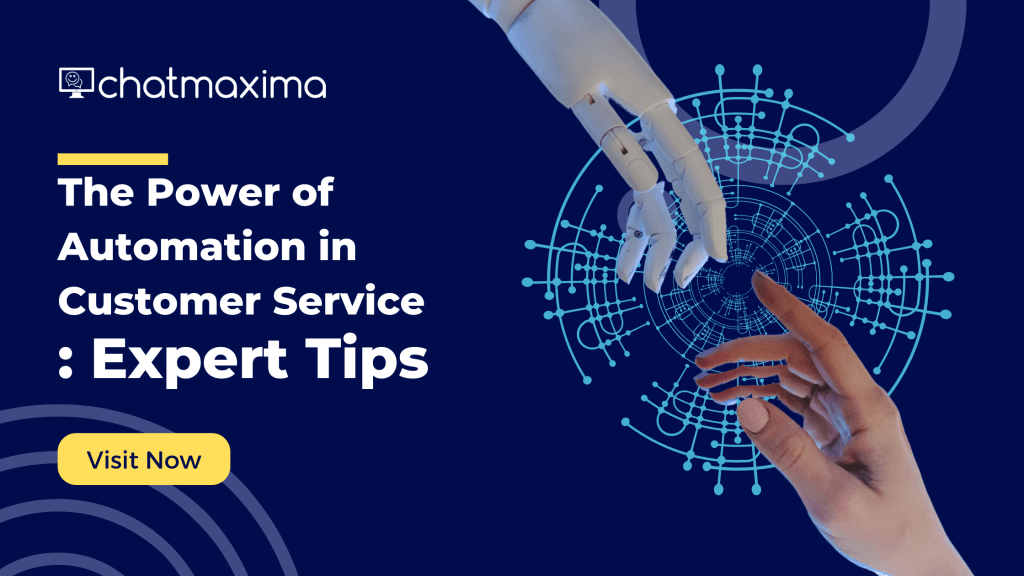Automation has become pivotal in shaping modern customer service paradigms, fundamentally altering how businesses engage with and support their customer base. By automating repetitive tasks and harnessing cutting-edge technologies, companies can markedly enhance the efficiency and effectiveness of their service operations. This evolution transcends mere workload reduction; it aims to enhance the customer journey by delivering faster, more precise, and personalized service experiences. Central to automation’s impact is its ability to streamline critical processes like query handling, ticket management, and proactive follow-ups. This optimization not only boosts operational productivity but also directly elevates customer satisfaction through timely and seamless interactions.
In this exploration of automation’s transformative power in customer service, we will delve into expert strategies that businesses can employ to maximize its benefits. From harnessing advanced Natural Language Processing (NLP) to enrich chatbot functionalities, exemplified by solutions like ChatMaxima, to utilizing data-driven insights for personalized customer interactions, each strategy aims to elevate service delivery and cultivate enduring customer relationships. By embracing these approaches, businesses can adeptly navigate the dynamic landscape of customer expectations, fostering sustainable growth and loyalty in an increasingly competitive market.
ChatMaxima: Elevating Customer Experience
Natural Language Processing (NLP):
ChatMaxima’s advanced NLP capabilities are crucial for accurately understanding and interpreting customer queries, regardless of their phrasing or complexity. ChatMaxima’s NLP recognizes the context of conversations, allowing it to remember previous interactions and provide relevant responses. For example, if a customer asks a general question and then a specific one, the chatbot maintains context to respond accurately. ChatMaxima’s NLP understands different phrasings of the same question, such as “How can I track my order?” and “Where is my order?” and treats them as the same intent.
NLP identifies the context of words, helping the chatbot distinguish whether a customer is asking a question, making a statement, or expressing a concern. By analyzing user intent, ChatMaxima provides appropriate responses. For example, if a user says, “I need help with my order,” the intent is identified as seeking assistance. NLP gauges the sentiment of conversations, detecting whether the customer is happy, frustrated, or neutral. This allows the chatbot to adjust its responses, offering empathy and expedited solutions when needed. Based on analyzed context and intent, ChatMaxima generates intelligent responses relevant to the customer’s query. For example, if a user asks about a product feature, the chatbot provides detailed information. Responses are customized to match the user’s specific needs and preferences, ensuring a more personalized experience.
Personalization:
ChatMaxima leverages customer data and history to provide personalized responses tailored to individual preferences. By analyzing past purchases and interactions, the chatbot adapts its recommendations and information to each customer. This level of personalization ensures that customers receive responses that are most relevant to their unique needs and interests.
Whether it’s suggesting products similar to previous purchases or recalling details from past conversations, ChatMaxima’s ability to personalize interactions fosters a sense of being valued and appreciated. Customers feel recognized and understood, which significantly enhances their overall experience with the brand. Personalization not only improves customer engagement but also encourages conversions. When customers receive tailored recommendations and relevant information, they are more likely to interact positively with the chatbot and make purchasing decisions. This ultimately leads to stronger customer relationships and increased sales.
Seamless Integration with Live Support:
ChatMaxima seamlessly transitions from bot to human agents when complex or unresolved issues arise, ensuring customers receive consistent support. The chatbot efficiently manages the handoff process, transferring all relevant conversation history to live agents, which allows them to quickly understand the customer’s issue and provide a resolution without requiring the customer to repeat themselves. This seamless integration maintains the continuity and quality of the customer service experience, ensuring that customers feel supported and valued throughout their interaction with the company.

Automate Routine Tasks and Processes
Self-Service Options:
Automate routine tasks and processes by implementing self-service portals, FAQs, and knowledge bases that allow customers to find answers independently. This approach empowers customers to resolve their issues quickly and efficiently without needing direct assistance from support agents. Automation reduces the load on support agents, freeing them up for more critical tasks. By handling repetitive and straightforward inquiries automatically, businesses can ensure their support teams are more available to address complex issues, ultimately enhancing overall customer satisfaction and operational efficiency.
Automated Ticket Routing:
Automate ticket routing with intelligent systems designed to direct inquiries to the most suitable agent or department based on predefined criteria. This automation optimizes the allocation of resources and ensures that customer inquiries are handled by the right personnel promptly. By leveraging automated ticket routing, businesses can achieve faster response times and more efficient issue resolution. The system efficiently distributes incoming tickets, reducing wait times for customers and enhancing overall service delivery. This approach not only improves customer satisfaction by addressing issues more quickly but also streamlines internal operations, allowing teams to focus on delivering high-quality support and resolving complex customer issues effectively.
Automated Follow-Ups:
Implement automated follow-up strategies to enhance customer engagement and satisfaction post-interaction. By setting up automated emails or messages, businesses can promptly send out satisfaction surveys, check-ins, or reminders for upcoming appointments. This proactive approach ensures that customers feel valued and well-informed, fostering stronger relationships and loyalty. Automated follow-ups not only save time and effort for customer service teams but also contribute to improved service delivery. They streamline communication by automatically triggering relevant messages based on customer interactions, ensuring timely responses and reducing the likelihood of overlooked follow-ups. This strategy not only enhances customer experience by providing consistent and personalized communication but also helps businesses gather valuable feedback and maintain ongoing engagement with their audience.
Proactive Customer Engagement
Automated Notifications:
Proactive customer engagement through automated notifications is essential for keeping customers informed and engaged throughout their journey. By automatically notifying customers about order updates, shipping statuses, or service appointments, businesses can enhance transparency and reliability in their operations. This reduces the need for manual interventions and ensures that customers receive timely updates without delays or oversights.
Automation in notifications not only improves operational efficiency but also contributes to a seamless customer experience. By delivering relevant information promptly, businesses can proactively address customer needs and expectations, fostering trust and satisfaction. This approach not only streamlines communication but also enables businesses to maintain consistent engagement with their customers, reinforcing their commitment to delivering high-quality service and support.
Behavioral Triggers:
Behavioral triggers are strategic tools in customer engagement that capitalize on user behavior to enhance interaction and conversion rates. By setting up triggers based on actions such as abandoned carts or browsing history, businesses can deploy personalized responses. For instance, if a customer abandons their cart, an automated message can offer incentives like discounts or free shipping to encourage them to complete their purchase. These triggers not only re-engage customers but also create opportunities for businesses to tailor their marketing efforts based on individual preferences and behaviors.
Implementing behavioral triggers enables businesses to deliver timely and relevant messages, thereby nurturing relationships and increasing the likelihood of conversions. By leveraging automation in this way, businesses can maintain proactive engagement with their audience, addressing their needs and preferences effectively. This approach not only boosts customer satisfaction but also optimizes marketing strategies by focusing resources on leads most likely to convert, ultimately driving business growth and profitability.
Data-Driven Insights
Analyze Customer Data:
Data-driven insights are invaluable assets for businesses aiming to refine their strategies and elevate customer satisfaction. By harnessing analytics tools, businesses can delve deep into customer data, uncovering valuable insights into behaviors, preferences, and pain points. These tools enable businesses to track customer journeys comprehensively, from initial engagement to final conversion, identifying key touchpoints and potential areas for improvement. By understanding what drives customer decisions and actions, businesses can tailor their approaches more effectively, ensuring each interaction is personalized and impactful.
Utilizing these insights allows businesses to optimize processes across various departments, from marketing and sales to customer service. By aligning strategies with customer expectations and preferences, businesses can enhance the overall customer experience. For example, by addressing common pain points identified through data analysis, businesses can implement targeted improvements, such as streamlining purchase processes or enhancing product features. Ultimately, leveraging data-driven insights empowers businesses to stay agile and responsive to customer needs, fostering loyalty and driving sustainable growth in competitive markets.
Omnichannel Automation
Consistent Messaging Across Channels:
Omnichannel automation is pivotal for maintaining a cohesive and responsive brand presence across various communication channels. By automating responses seamlessly across email, chat, social media, and phone, businesses can ensure that customers receive consistent messaging regardless of how they choose to engage. This consistency not only reinforces brand identity but also enhances customer satisfaction by providing timely and accurate information across platforms. For instance, a customer querying about a product on social media should receive the same level of detail and professionalism as they would through email or a phone call, ensuring a unified brand experience.
Moreover, automated omnichannel responses enable businesses to scale their customer support operations efficiently. Rather than managing each channel separately, automation tools allow businesses to centralize communication workflows, reducing the workload on support teams while maintaining high standards of service. This approach not only improves operational efficiency but also enables faster response times and resolution of customer inquiries, contributing to overall customer loyalty and retention. By leveraging omnichannel automation effectively, businesses can meet the diverse needs of modern consumers while reinforcing their brand reputation for reliability and accessibility.
Conclusion
Automation in customer service is not merely about efficiency; it’s a strategic approach that significantly enhances overall service effectiveness and customer satisfaction. By leveraging advanced tools like ChatMaxima with its robust NLP capabilities, businesses can accurately interpret and respond to customer queries regardless of complexity or phrasing. This not only streamlines interactions but also ensures a personalized customer experience through tailored responses and proactive engagement strategies. Personalization further strengthens this approach by utilizing customer data to offer relevant recommendations and support, thereby fostering deeper engagement and driving conversions.
Seamless integration with live support systems ensures continuity in customer service interactions, where ChatMaxima seamlessly transitions from automated responses to human agents as needed. This capability not only maintains consistency but also enhances problem resolution efficiency, ultimately leaving customers with a positive impression of the brand. Automating routine tasks such as ticket routing and follow-ups not only optimizes operational workflows but also improves service delivery by reducing response times and enhancing customer satisfaction through timely and proactive engagement.
Moreover, proactive customer engagement through automated notifications and behavioral triggers demonstrates a commitment to transparency and customer care. By keeping customers informed about updates and leveraging behavioral data to anticipate needs, businesses can foster stronger relationships and increase customer loyalty. Data-driven insights further empower businesses to refine their strategies, offering deeper understanding of customer behavior and preferences to continually improve service quality. Combined with omnichannel automation for consistent messaging across all communication channels, businesses can ensure a unified brand experience that resonates positively with customers, driving sustainable growth and competitiveness in the market.


Pingback: AI Chatbots for SaaS: Collecting Customer Feedback Easily - ChatMaxima Blog